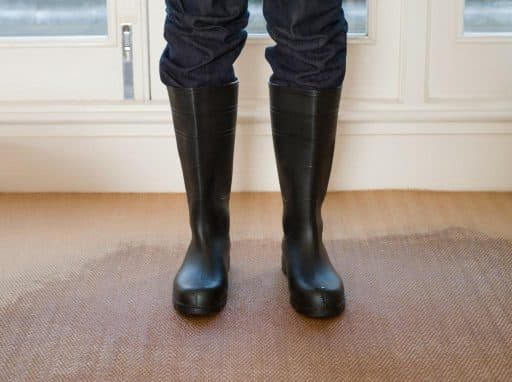Saving a water damaged carpet is nearly impossible. However, the chances of saving it depends on several factors. For example, suppose your carpet is wet due to clean water from leaking or burst pipes. In that case, the likelihood of saving your carpet is high, especially if it was clean prior to the damage. However, if your carpet is flood-damaged, the type of floodwater involved plays a huge role in whether or not you can save it.
Many health standards advise homeowners to remove and replace their carpets if they come into contact with contaminated water. For instance, if water from the streets gets into your home during a flood or sewage backs up, you’re better off without the carpet. Also, a carpet soaked is unlikely to be saved regardless of the water involved.

Wet carpets are ideal dwellings for mold, mildew, disease-causing bacteria, and other toxins. It’s, therefore, vital to assess your carpet to find out if it’s worth keeping. If your carpet is salvageable, consider hiring professional carpet cleaners to do what they do best. Such cleaners have the necessary equipment and detergents to remove mold and mildew from the carpet successfully. If you reside in Sydney and want help with your water-damaged carpet, visit www.waterdamagespecialist.com.au/sydney/ to contact professionals.
How To Save A Water-Damaged Carpet
There are different types of water that can damage your carpet; clean, gray, and black water. Clean water, as stated earlier, is uncontaminated and comes from broken or leaking pipes. Cleaning a carpet soaked in clean water is a bit easy, especially if the carpet hasn’t stayed in the water for a prolonged period.
You can either clean such a carpet or hire professional cleaners to do the job. If you decide to DIY, you’ll need a vacuum, an air conditioner, a dehumidifier, and electric fans to dry the wet carpet. Suppose you can relocate your carpet. Consider drying it outside to speed up the process. If it can’t, you’ll have to dry it in place.
When drying a flooded carpet, remove as much water as possible using a wet-dry shop vac or carpet cleaner. Then, the padding (a thin layer installed under the carpet). Once you’ve removed most of the water, use electric fans, a dehumidifier, and an air conditioner to dry the carpet. You can also open all windows to introduce air into your home. After the carpet is dry, hire a skilled person to replace the padding and install the carpet.
During the first few days of drying the carpet, be attentive to determine if there’s any musty smell. If there is, you probably didn’t dry the carpet effectively. At this point, you need to act fast since the smell indicates mold and mildew growth. If the smell isn’t indicating mold presence, sprinkle baking soda on the carpet and leave it overnight. This will help eradicate any funny smell, leaving your carpet smelling fresh.
Saving Carpets Damaged By Contaminated Water
Contaminated water comes in two types, gray and black water. Gray water overflows from sinks and washing machines and has a lower level of contamination than black water.
Saving a carpet contaminated with gray water is a little more complicated than dealing with clean water. Therefore, you must be cautious when handling such a carpet. It’s advisable to keep off from cleaning a gray water-contaminated carpet since you’ll likely leave bacteria that can pose a health risk. If you’re looking forward to saving a gray water-contaminated carpet, seek help from professional carpet cleaners.
As far as dark water is concerned, it refers to sewage, toilet overflow, and street water. This water is highly contaminated and can cause severe health issues. Suppose your carpet has come into contact with such water. You should discard it immediately.
However, if you want to save such a carpet, you’ll need to hire professionals to assess the situation and advice on the way forward. If it’s salvageable, they’ll clean it to ensure it’s free of contaminants. Remember, saving a black water-contaminated carpet is mostly impossible; hence you should be prepared to dispose of it.
Conclusion
Saving water-damaged carpets might be possible. Nevertheless, some factors determine whether or not to do so. For example, while you can keep a clean water-contaminated carpet, it depends on how fast you act. If the carpet stays in the water for a prolonged period, saving it might be impossible. On the other hand, rugs damaged with highly contaminated water can be challenging to save. Unless you hire professionals to handle such, they’re better in the bin since they can cause severe health challenges.






